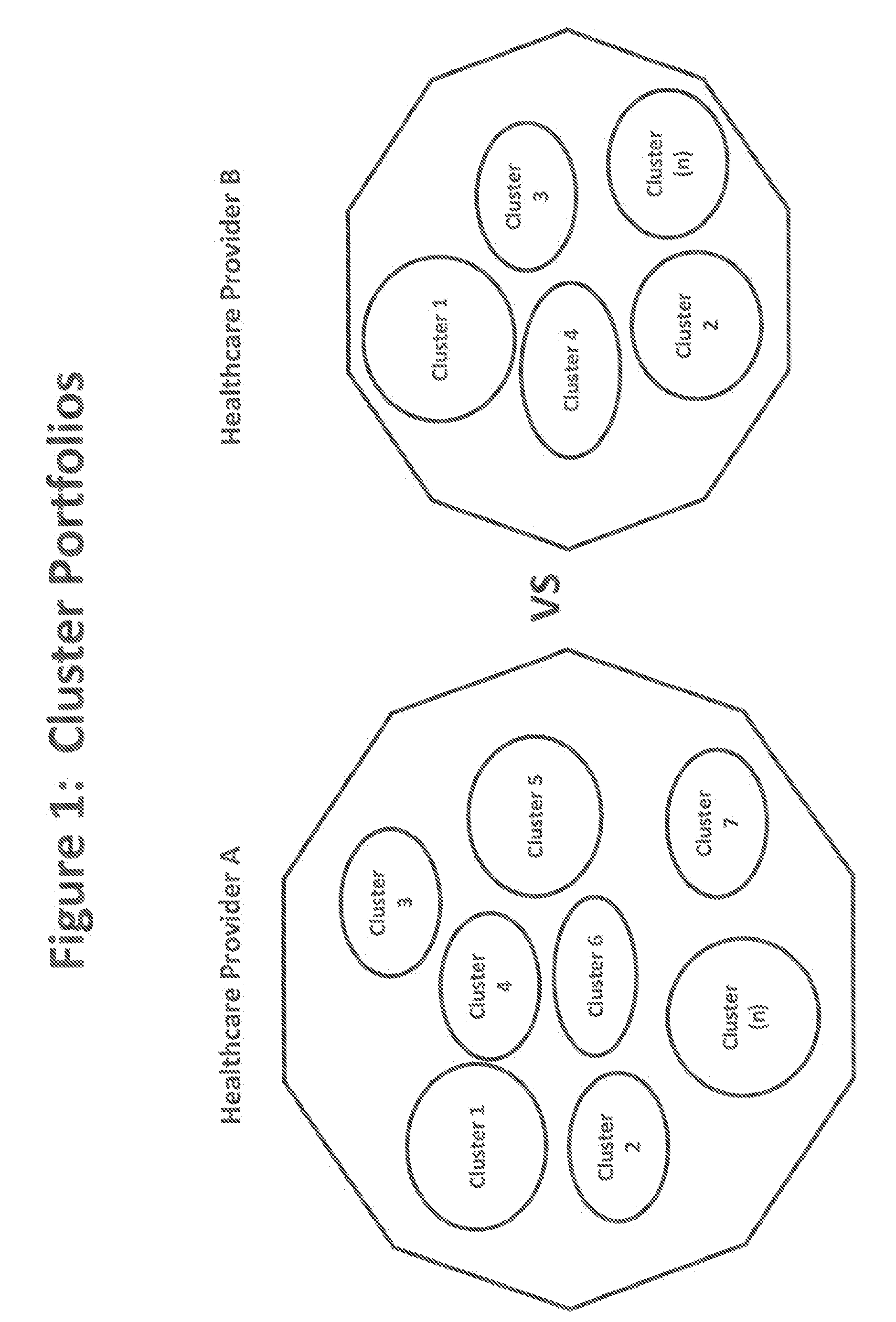Population Adjusted Indexes
a population and index technology, applied in the field of population adjusted indexes, can solve the problems of not easily applied across a broad range of disease conditions or populations, difficult to evaluate the level and reasonable expense of medical services, and provide a convenient way
- Summary
- Abstract
- Description
- Claims
- Application Information
AI Technical Summary
Benefits of technology
Problems solved by technology
Method used
Image
Examples
example 1
A Healthcare Index
[0145]As an example of a preferred embodiment, an index of cancer healthcare (“CHC Index”) was constructed. FIG. 8 illustrates the 90 day unadjusted index values for performance outcome data as defined as the average total healthcare cost per patient, for patients seen at a medical center for inpatient treatment of their cancers. (Also shown in FIG. 8 is a trend line for the unadjusted index data)
[0146]The index was constructed for a portfolio of patients consisting of 11 clusters. The clusters were defined as a grouping of patients diagnosed with one of the following cancers: uterine, urinary bladder, prostatic, pancreatic, ovarian, non-Hodgkin's lymphoma, lung, leukemia, colorectal, breast, brain & other nervous system cancers. The Unadjusted Index Value consists of the sum of all weighted Cluster Outcomes for each cluster segment as follows:
Unadjusted Index Value(tn)=Σ(Cluster Outcome(i)*Q(i))(tn)
[0147]Wherein, cluster outcome (i) is the outcome value for cluste...
example 2
Comparing Different Healthcare Groups
[0158]In order to demonstrate an additional preferred embodiment, ten hypothetical oncology groups (i.e. MD groups) were compared for performance to treat patients by each MD group as measured by average total pharmaceutical costs per patient. Each MD group portfolio is composed of clusters consisting of patients diagnosed with different cancers. FIG. 12 is a bar graph showing the cluster composition for each MD Group. (Note, MD Group 11 has the same patient-mix as MD Group 1. However, MD Group 11's costs have been increased for the treatment of patients with leukemia and lung cancer).
[0159]FIG. 13 shows the average total pharmaceutical costs per patient for the ten hypothetical MD Groups for a single Time Period (tn). Additionally, FIG. 13 also shows the market portfolio index (plus / minus one standard deviation) as a shaded band. As can be seen in this figure, making comparisons between MD Groups having portfolios with varying patient-mix is dif...
PUM
 Login to View More
Login to View More Abstract
Description
Claims
Application Information
 Login to View More
Login to View More - R&D
- Intellectual Property
- Life Sciences
- Materials
- Tech Scout
- Unparalleled Data Quality
- Higher Quality Content
- 60% Fewer Hallucinations
Browse by: Latest US Patents, China's latest patents, Technical Efficacy Thesaurus, Application Domain, Technology Topic, Popular Technical Reports.
© 2025 PatSnap. All rights reserved.Legal|Privacy policy|Modern Slavery Act Transparency Statement|Sitemap|About US| Contact US: help@patsnap.com



